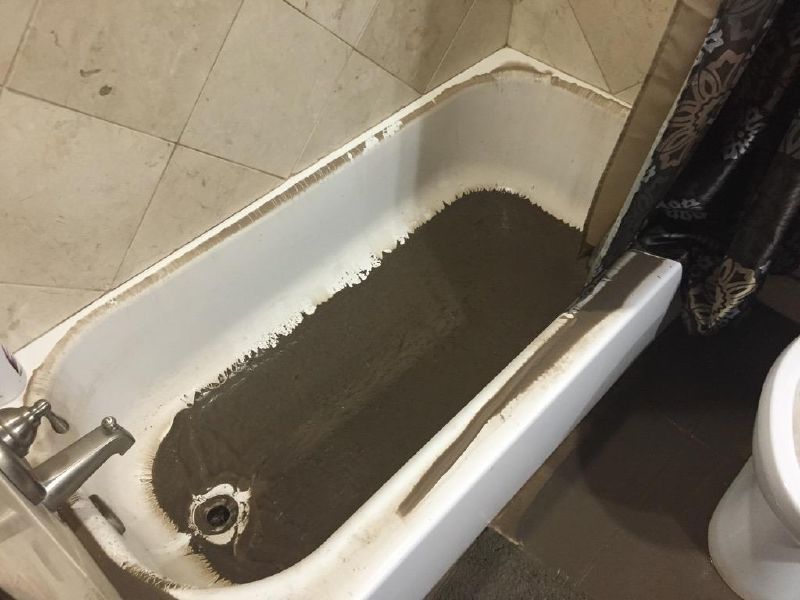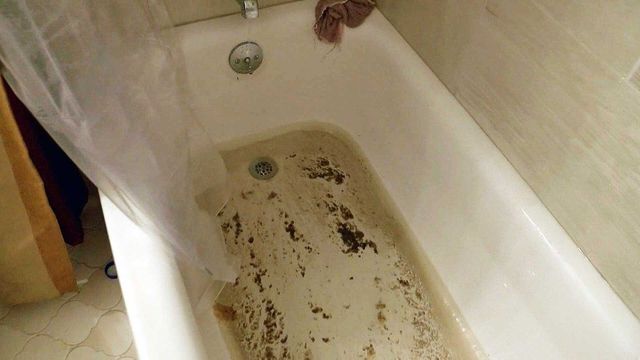Almost everyone has got their private theory about Water Coming up Bathtub Drain.

Sewer backup in the bathtub can be a stressful and unsanitary issue for any property owner. Not only is it troublesome, however it likewise postures significant health dangers and indicates underlying problems with the plumbing system. Recognizing why sewage is turning up via the tub is crucial for taking proper action to address the issue efficiently.
Introduction to the Concern
Common Reasons for Sewage Backup
Obstructions in the Drain Line
Among one of the most usual sources of sewer backup is a clog in the sewage system line. This can happen because of the accumulation of debris, oil, or foreign things in the pipes, preventing proper flow and creating sewer to back up right into your tub.
Tree Origin Invasion
Tree origins looking for wetness and nutrients can infiltrate drain lines with tiny cracks or joints. Over time, these origins can grow and increase, triggering significant damages to the pipes and bring about sewer back-up problems.
Understanding the Issue
When sewage starts backing up into the bathtub, it's a clear indication of an issue with the drainage system. The wastewater that must be streaming away from your home is rather locating its way back into your space, which can lead to substantial damages and carcinogen.
Potential Reasons
A number of variables can add to sewage backup in the bathtub. From obstructions in the sewage system line to issues with the plumbing facilities, identifying the source is important for discovering a remedy.
Aging Framework
Older homes might have outdated plumbing systems that are much more susceptible to corrosion, splits, and damage. As pipelines age, they come to be extra susceptible to leaks and blockages, enhancing the possibility of sewage back-up occurrences.
Heavy Rainfall or Flooding
During durations of heavy rainfall or flooding, the sewer system may come to be overwhelmed with excess water, causing back-ups and overflows. This can cause sewage backing up into bath tubs and various other components inside the home.
Signs of Sewage Back-up
Foul Odors
Unpleasant odors emanating from drains or fixtures, particularly in the restroom, may suggest sewer backup issues. These odors are usually solid and relentless, signifying an issue that needs immediate attention.
Slow Draining Fixtures
Bath tubs, sinks, and commodes that drain pipes gradually or not at all could be experiencing sewer backup. If several components are influenced simultaneously, it's most likely that the issue originates from an usual point, such as the major sewage system line.
Gurgling Noises
Odd gurgling or gurgling noises coming from drains when water is running in other places in your home are a measure of air trapped in the plumbing system. This air accumulation can result from sewer backup and must be investigated promptly.
Wellness Dangers Related To Sewer Back-up
Contamination of Supply Of Water
Sewer back-up can pollute the water system in your house, presenting a severe wellness risk to you and your household. Exposure to contaminated water can bring about stomach problems, skin infections, and various other illnesses.
Mold Development
Wetness from sewage backup can create optimal conditions for mold growth in your home. Mold spores can exacerbate breathing problems and trigger allergies in sensitive individuals, making punctual cleanup essential.
Spread of Disease
Sewer contains unsafe germs, viruses, and parasites that can cause a variety of conditions, including hepatitis, cholera, and gastroenteritis. Coming into contact with sewer or contaminated surface areas places you in danger of infection.
Tidying up After Sewer Backup
Disinfection Procedures
Thoroughly decontaminate and disinfect influenced locations after sewage backup to eliminate unsafe bacteria and protect against mold development. Usage suitable cleaning items and safety equipment to make sure risk-free and efficient cleaning.
Reconstruction of Affected Areas
Fix any type of damage to floor covering, wall surfaces, or components brought on by sewer back-up. Depending on the degree of the damages, you might require to replace carpeting, drywall, or various other products to restore your home to its pre-loss condition.
Immediate Actions to Take
Shutting Off Supply Of Water
In the event of sewer backup, it's important to shut off the supply of water to prevent further contamination and damages. Find the primary water shutoff valve in your home and closed it off up until the problem can be fixed.
Speaking To a Specialist Plumber
Taking care of sewer backup is not a DIY work. Contact a certified plumber with experience in taking care of sewage-related issues to analyze the circumstance and do needed fixings or cleanings.
Preventing Contact with Contaminated Water
Up until the sewage backup is fixed, avoid contact with polluted water to avoid the spread of germs and microorganisms. Use protective gear if you need to remain in the affected area and wash your hands extensively later.
Preventive Measures
Routine Maintenance of Sewage System Lines
Arrange normal assessments and upkeep of your drain lines to identify and address possible issues prior to they rise right into major problems. This can consist of clearing out particles, evaluating for tree root breach, and fixing any damaged pipes.
Mounting Backwater Valves
Consider installing backwater shutoffs in your plumbing system to prevent sewer from flowing back right into your home throughout durations of heavy rainfall or flooding. These shutoffs automatically close when water draws back up, shielding your residential property from contamination.
Correct Disposal of House Waste
Stay clear of purging anything apart from toilet tissue and human waste down the bathroom to stop obstructions and clogs in the sewer line. Dispose of oil, oil, and various other home chemicals correctly to minimize the danger of plumbing problems.
Why is Sewage Coming Up Through Your Bathtub?
Reasons You May Have Sewage in Your Bathtub
All the drains in your home lead down different pipes to get to the main sewer line. If you’re seeing sewage in the bathtub, the problem is that the main sewer line is clogged up, which is causing the water running through other drains to be pushed back into other pipes. The problem isn’t the bathtub, but the main line. The sewer line can get backed up by anything that goes down the drain, from food waste, hair and soap particles to jewelry or children’s toys. Tree branches or dirt can also impact the sewer line. If you’re seeing sewage in the bathtub, you have a big problem that usually needs a professional plumber. Trying to fix this problem without the right tools or knowledge can lead to bigger plumbing problems.
Fixing a Clogged Sewage Line
Although you shouldn’t try to fix the clogged sewer line on your own, you may be able to mitigate the issue until you can get a plumber to your home. A plunger isn’t going to help, because it won’t be able to reach the sewage drain to unblock the problem.
Turn Off Water
Find the main shutoff valve to your home to turn off the water. This prevents more water from going down the drain which is only going to flow back into your bathtub.
Snake the Toilet and Drain
Start by using a drain pipe snake to clean out the toilet drain. Rotate the snake clockwise when you push the snake down. As you pull it out, the snake should spin counterclockwise. Follow up by snaking out the bathtub drain. If you are successful, both the toilet and shower will drain efficiently. If you’re not successful, you probably have a bigger problem than your tools and experience can manage.
Contact a Professional Plumber
Pros have the tools to find the source of the problem and the experience to manage big blockages without causing more damage to your pipes. It can save you a lot of stress by contacting the professionals sooner rather than later.
Identify the Early Signs of a Clogged Sewage Line
If you’re gearing up for a holiday family gathering or just want to avoid the hassle of a clogged sewage line in your home, make sure you recognize the signs of a clogged sewer line.
Slow drains are a sign of a sewer line problem. Gurgling drains from any drain in your home indicate that you may have an obstruction in the drains. If your toilet keeps getting clogged, it might be a problem with the sewer line. When you see laundry water or water from the dishwasher in different sinks in the home, it’s an indication that your sewer drain is beginning to get backed up. These symptoms can often be “fixed” temporarily to get through a day or week before you start seeing the same problem. When it comes to plumbing problems, you want to fix the root of the problem instead of muddling through. The clog will not go away on its own.
https://handymanconnection.com/mississauga/articles/why-is-sewage-coming-up-through-your-bathtub/

As a keen person who reads on , I was thinking sharing that excerpt was beneficial. Enjoyed reading our post? Please quickly share it. Let another person find it. I praise you for being here. Revisit us soon.
Request Free Estimate